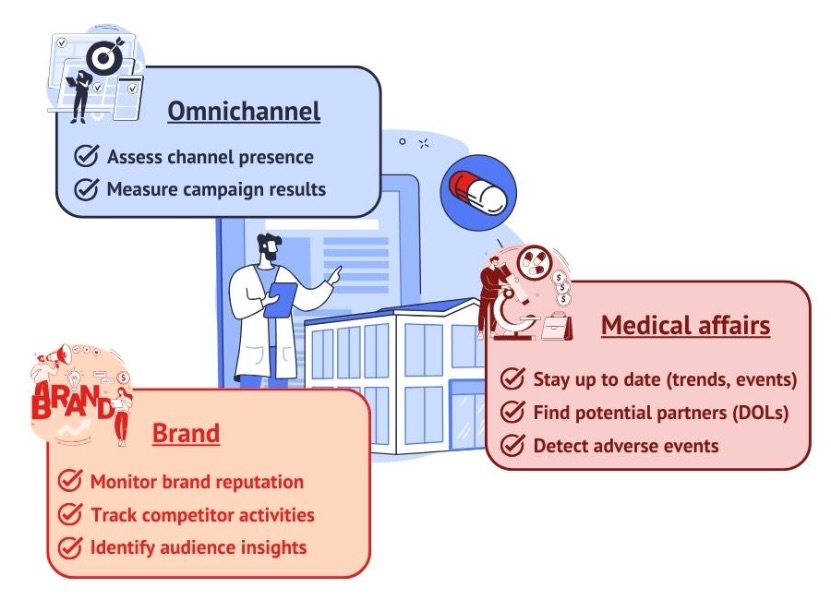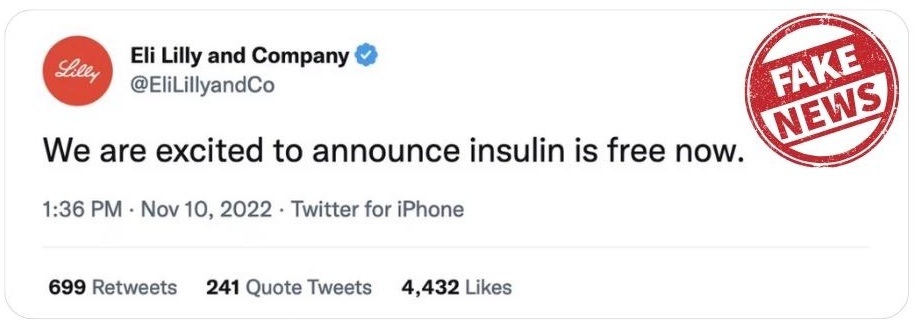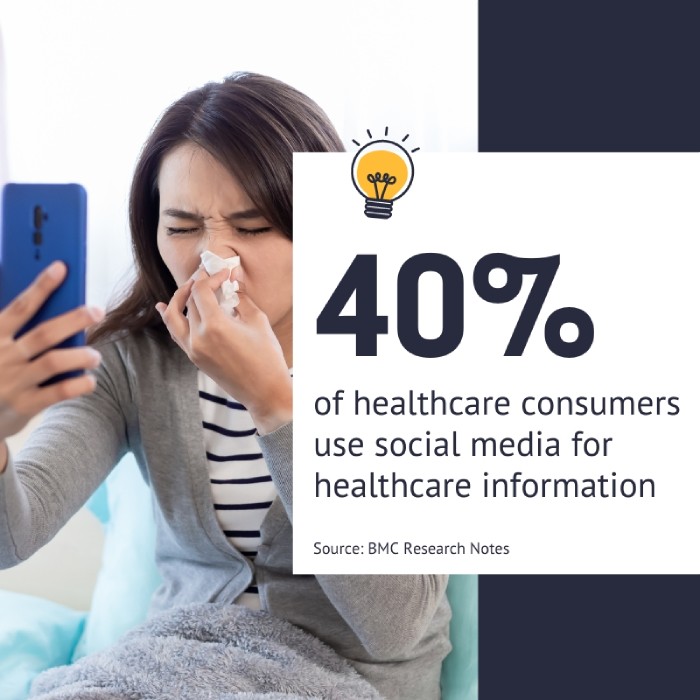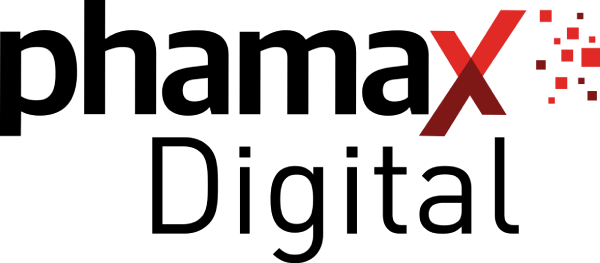Most of the successful people I’ve known are the ones who do more listening than talking (Bernard Baruch)
This quote is as true in life as it is in business and if I started the article with it, it is to emphasize how important social listening is in the success of your company.
A solid social listening strategy will give you the data you NEED to understand your audience and engage accordingly.
What do people think about your brand? How does your image fare compared to that of your competitors? How does your audience feel about your line of business?
You get it. Having access to what your audience says on social media and having the means to understand the conversations is incredibly valuable for your company.
This goes for every company, but this is particularly true for pharma organisations as the global industry’s image could use some strengthening.
Let’s get into it.
Key Takeaways
Understand social listening
Let’s start with a quick medical analogy…
Social listening is to you what a stethoscope is to a physician.
The skilled physician uses the stethoscope to listen to the heartbeat of a patient, in order to detect any anomalies. You use social listening to know how your audience feels about your brand/company and understand what they really want from you and the industry as a whole.
In short, social listening is a 4-step activity:
Monitoring
Monitoring social media platforms for conversations around your brand, competitors’ industry and relevant topics/keywords
Understanding
Understanding the social media sentiment behind the conversations
Analysing
Analysing these conversations to identify trends that bring improvement and growth opportunities
Taking action
Taking action based on the conclusions you drew in the previous steps
It’s not just about collecting data and commenting on posts where your brand is mentioned. Social listening is about the bigger picture. The key is to understand the feelings behind the data in order to draw conclusions and act accordingly.
It’s a proactive activity to develop long-term solutions based on the insights you gathered on a macro level.
The distinction between social monitoring and social listening
We noticed that these terms are often used interchangeably, but they have a different scope.
As we’ve just seen, social monitoring is actually the first step in social listening.
- Monitoring is about answering “What are people saying?”
- Listening goes further and answers “Why are they saying it?”
To come back to our medical analogy, monitoring is about identifying the symptoms, while listening is about revealing the cause of these symptoms.
This means that social monitoring will help you to identify issues or questions from your audience and to respond appropriately. Social listening, on the other hand, will help you to understand why your audience has these issues, so you can adapt your strategy accordingly.
What to track for efficient social listening?
There isn’t a one-size-fits-all answer to that question.
Your social listening goals and the element you track depend on the needs of your different stakeholders. It will vary depending on if you’re looking at it from the point of view of a brand, the overall omnichannel strategy or medical affairs, to cite only the three most common stakeholders.

For example, medical affairs might want to identify DOLs (Digital Opinion Leaders) to partner with in a disease awareness campaign. To do so, important elements to track include niche keywords, brand mentions and a specific geographic area.
A brand manager who wants to analyse competitor activities should mostly focus on tracking elements relevant to that competitor, such as the competitor’s brand mentions, the main hashtags used by that competitor and the influencers they are working with.
Fill the form to receive a free framework on the key elements to track according to your social listening goals
Prevalent Uses of Social Media Listening in Pharma
According to Hootsuite’s 2022 Social Media survey, around 65% of respondents agree that social listening has increased in value for their organisation over the previous year.
It’s definitely a trend you don’t want to miss out on, especially since your competitors are probably working on their own social listening strategy.
But what are the use cases for social listening and what tools are available for your company?
Let’s have a look.
Brand sentiment analysis
A use case of social listening that directly comes to mind is being able to measure the average sentiment about your pharma brand or drug.
- What are the conversations around your brand?
- How much conversation is there?
- Based on these conversations, how do patients/HCPs feel about your brand?
While many brands will stop there, a brand sentiment analysis actually needs to be taken one step further.
For example, if a newly launched drug gets a 60% negative sentiment, good social listening should also analyse the data behind that negative sentiment.
- What is the reason behind this negative sentiment? Is it due to the effectiveness of the drug itself? Is it bad pricing? Or bad customer service maybe?
- How does the sentiment evolve over time? Was it better before? Then what could be the catalyst of this negative trend?
- Is this negative sentiment high for your brand only, or is it industry-wide?
Brand monitoring (compliance & pharmacovigilance)
So, your brand sentiment is positive and everything is coming up roses… Congrats, but when it comes to a brand’s image, all it takes is a small PR misstep or fake news and things can escalate quickly!
Remember the fake Eli Lilly and Co.”Verified” Twitter account that tweeted “We are excited to announce insulin is free now.”? That could have ended up in a disaster for the company!

That’s why you should adopt a proactive approach by constantly monitoring your brand’s mentions, reputation and sentiment fluctuations. It’s key to identifying and addressing potential PR crises! (Social listening tools can send real-time alerts when specific keywords are detected).
When it comes to pharmacovigilance, social listening can help you to:
- Detect adverse events and side effects from medications early
- Uncover previously unknown adverse reactions
- Track medication misuse or abuse
- Gather geographic and demographic insights related to adverse events
As for compliance, here is how social listening can help:
- Stay up to date with changes in regulations and guidelines
- Detect employees’ social media activities in violation of your compliance policies
- Monitor discussions and concerns related to data privacy
- Ensure that customer inquiries are addressed within regulatory guidelines
- Detect illegal marketing practices and violations of industry standards
- Gather competitive data in order not to fall behind with industry norms
The pharmacovigilance and compliance insights you gather with social listening are a gold mine for your company! Use it to improve patient education materials, label instructions, and communication strategies, but also to better educate employees and stakeholders on compliance issues and to ensure a proactive response to regulatory shifts.
When it comes to your brand’s image, social listening allows you to know where you stand. Discover how to enhance your image!
Competition analysis
Social listening is also an important element of competition analysis.
By analysing competitors on social media, not only can you identify several elements such as their strategies, campaigns, and product launches, but also assess how you compare in terms of your brand’s share of voice or your organisation’s image.
To take the example above, if your drug has a 30% negative sentiment, how are the competitors doing? Do they have to deal with the same negativity or do their drugs have a more positive sentiment?
Based on that analysis, you can identify what they do better and align.
This goes the other way around as well. You can use social media to identify complaints consumers have about your competitors and focus your efforts on outperforming them in these areas.
Social listening is a great way to identify market gaps and opportunities.
Relevant influencers identification
As introduced above, social listening is a great proactive approach to identifying and engaging with influencers (both KOLs and DOLs) in the pharma space.
There are several ways to identify potential influencers on social media through social listening, but here are a few to get you started:
- Start by looking at your brand mentions. Are there users mentioning your brand positively on several occasions? These “brand ambassadors” might be easy influencers to work with, as they already like your brand
- Follow the same logic with your competitors. By tracking their “brand ambassadors” and the influencers they engage with, you can identify potential influencers for your own brand
- Track hashtags, keywords and mentions in your niche to identify relevant conversations and the thought leaders who are actively engaged in these discussions
Once you have a list of potential influencers, there are 3 key metrics to look at to evaluate if an influencer is a match or not:
Influence
How many followers does he have? Do they match your targeted audience? How does the influencer compare to other influencers in the industry/niche?
Engagement
Do people interact with his content? Look further than likes. Are there comments and reposts? Is there a conversation and does the influencer reply to comments?
Relevance
Does the content they publish match your objectives and the ones of your targeted audience?
We could go as far as saying that social listening is the most powerful way to identify DOLs when targeting HCPs as they are not as easy to find as DOLs targeting patients. They typically have a lower follower count and relevance matters even more.
Curious about working with DOLs? Here is all you need to know
Disease awareness and patient advocacy

According to a (rather old) study from 2017, more than 40% of healthcare consumers use social media for their healthcare information needs.
This number goes up to 90% for the 18-24 age group.
Post covid, we can only expect these numbers to continue to grow.
As the digital footprint grows, so do opportunities for pharma marketers:
- Identify the issues and most frequent questions from patients and leverage these by creating helpful content (social media posts, blog posts, FAQ page)
- Be the first contact point with these patients, develop relationships
- Identify topics your audience likes on social media and include this content in your content plan
- Analyse conversations and hashtags to identify industry trends that you can leverage at more strategic levels. This could mean a repositioning or even the development of a new product after identifying a market gap
- Monitor conversations around specific diseases and conditions, in order to not only identify disease awareness gaps but also to engage in patient advocacy and support initiatives
The Main Challenges in Social Listening for Pharma
As always in pharma, you’re navigating unpredictable seas and social listening comes with its own challenges.
Here are a few of the head-scratchers you’ll want to wrap your brain around. Proceed accordingly and your social listening activities should sail smoothly.
Data Privacy and Ethical Concerns
Striking the right balance between collecting (and using) valuable data and respecting individuals’ privacy rights is a constant challenge.
Sometimes, personal health information is inadvertently shared online and you need to be careful with the data you collect, in order to respect patient confidentiality.
There is also a fine line between social listening and intrusion.
Collecting and using sensitive health-related data without transparency or consent can be viewed as unethical and invasive, even if it’s published on public social networks.
It’s vital to know your place, and most of all, you should not manipulate or exploit patient stories for your benefit
It goes without saying that social listening, if not conducted ethically and responsibly, can (and will) damage your company’s reputation and erode trust with patients and HCPs.
And good luck earning that trust back!
Regulatory Compliance
This is about ensuring that all engagements and communications adhere to industry regulations.
Easier said than done? We know!
Here are some regulation challenges to consider in social listening:
- Complexity: Several complex, ever-changing regulations dictate how pharmaceutical companies can engage with patients and HCPs and they often vary from one jurisdiction to another
- Rigidity: Regulations such as the HIPAA in the United States and the GDPR in the European Union have strict requirements for the collection, storage, and handling of patient data. Social listening activities that involve the collection of personal health information must adhere to these regulations
- Consent: Regulations often require explicit consent from individuals for the collection and use of their data.
- Privacy/Ethics: Companies must be careful not to cross the line by actively seeking out or using private or sensitive information without proper consent
- Event reporting: Regulations can obligate pharma companies to report to authorities potential adverse events uncovered during social listening activities
- Local regulations: Coordinating social listening efforts across multiple regions while ensuring compliance with each jurisdiction’s specific laws can be a daunting task
Volume and Velocity of Data
Dealing with the vast amount of data generated daily through social listening is not for the faint of heart!
Processing and making sense of this vast volume of information can be overwhelming for pharma companies, especially without the right tools and resources.
(Luckily for you, further in this article, you’ll find a list of some of the best tools available to save you a lot of time and manpower).
Data overload brings more challenges! Here are a few:
- Real-time monitoring: The constant flow of data makes real-time monitoring to ensure timely responses and actions difficult
- Data quality: Not all data collected is going to be relevant or accurate. Sorting through the noise, spam, or irrelevant content is essential to ensure that the data being analyzed is of high quality
- Multilingual and multichannel data: We hope you’re a polyglot if you need to collect and analyse data in several languages, across several social networks
- Privacy concerns: Patient confidentiality and data privacy are not to be messed with! This requires extra precautions when analysing data
- Actionable insights: As explained above, a goal of social listening is to extract actionable insights. It can be challenging to identify the most relevant information and turn it into meaningful actions
Sentiment analysis limitations
In the section “Prevalent Uses of Social Media Listening in Pharma”, we explained how social listening helps with your brand’s sentiment analysis.
While it is a great indicator of your brand’s image online, we recommend taking the score with a pinch of salt, especially if the analysis is done through an automated sentiment analysis tool.
Don’t get us wrong, the score given by these tools is a very quick and useful way to assess the situation, but the tools have their limitations, including:
- Context: Sentiment analysis tools struggle to grasp the context of pharmaceutical discussions. For example, a mention of a medicine with negative sentiment might be about its side effects rather than its overall efficacy
- Misinterpretations: These tools struggle to detect sarcasm, irony and humour. This means the tool can inaccurately give a positive sentiment to a negative post, for example
- Mixed sentiments: If a patient expresses relief from a medication’s effectiveness but complains about its price in the same post, will the tool give a positive or negative sentiment?
To mitigate these limitations, you might want to use sentiment analysis as one component of your social listening efforts, alongside human interpretation.
Social listening tools
While social listening can be done manually, we think that after reading about the different challenges, you understand how useful social listening tools can be.
Manual social listening is incredibly time-consuming, requires manpower and misses some key features of social listening tools, such as automation, live alerts and reporting.
Now, there are many tools you can use for your social listening. Some are dedicated to that activity and others offer complete social media management suites. As usual, choosing the right tool is up to your needs and budget.
Here is a quick introduction to some of the most popular tools for social listening (in no particular order).
| Tool | Focus |
| Brand24 | Comprehensive social listening tool (including influencer discovery) for businesses of all sizes |
| Awario | Social listening platform with a lower starting price point for smaller companies |
| Mention | Social listening and publishing (multiplatform post scheduler) tool that comes as a middle ground between tools like Brandwatch and Brand24 |
| Brandwatch | All-in-one social media management suite divided into 3 solutions: Consumer intelligence, Social Media Management, and Influencer Marketing |
| Sprout Social | All-in-one social media management platform (it’s not a suite, so it’s all or nothing) including social listening, engagement monitoring, post publishing, social data & analytics and employee advocacy features |
| Hootsuite | Primary a publishing tool which developed into a full social media marketing and management tool, including social listening features |
| Meltwater | Suite of 8 solutions for data analysis across media, social, consumer and sales intelligence. It includes Media Intelligence, Social Listening, Social Media Management, Consumer Intelligence and more |
| Audiense | Market research tool offering two solutions, divided into 4 tools: Audiense Intelligence (Social, Digital and Demand Intelligence) and Twitter Marketing (Community management and analytics) |
| Pulsar | High-end audience intelligence and social listening platform divided into 3 solutions: TRAC (social listening and media monitoring), CORE (owned channel analytics) and TRENDS (trend research and visualization) |
| Buzzsumo | Content marketing tool with social listening features (mention tracking, competitor intelligence, alerts, influencer identification) |
| Sparktoro | Audience research tool. While it doesn’t include some key social listening features such as brand mention tracking, it’s a great complementary tool to better understand your audience |
Conclusion
In this digital age, social networks are more than just platforms for sharing information.
Both patients and HCPs are active on these platforms for health-related discussions and like it or not, conversations about your products and the healthcare landscape are happening online. Therefore, it’s only logical for your pharma company to be there as well.
But “being there” is not about creating accounts and publishing random content. Being there means listening, learning, and leading!
And to be fair, you can’t do that without social listening…
It gives you a deeper understanding of patient needs, enabling you to develop more patient-centric solutions
It allows you to identify emerging trends or market gaps and adapt your strategies accordingly to stay ahead in a constantly evolving industry
It’s a key element of influencer marketing as it allows you to identify relevant influencers, patient advocates and the HCPs that shape the conversation
Most importantly, it enables you to address concerns quickly, enhancing trust and transparency in an era where these qualities are paramount
In short? Listen first, understand second, speak third!
